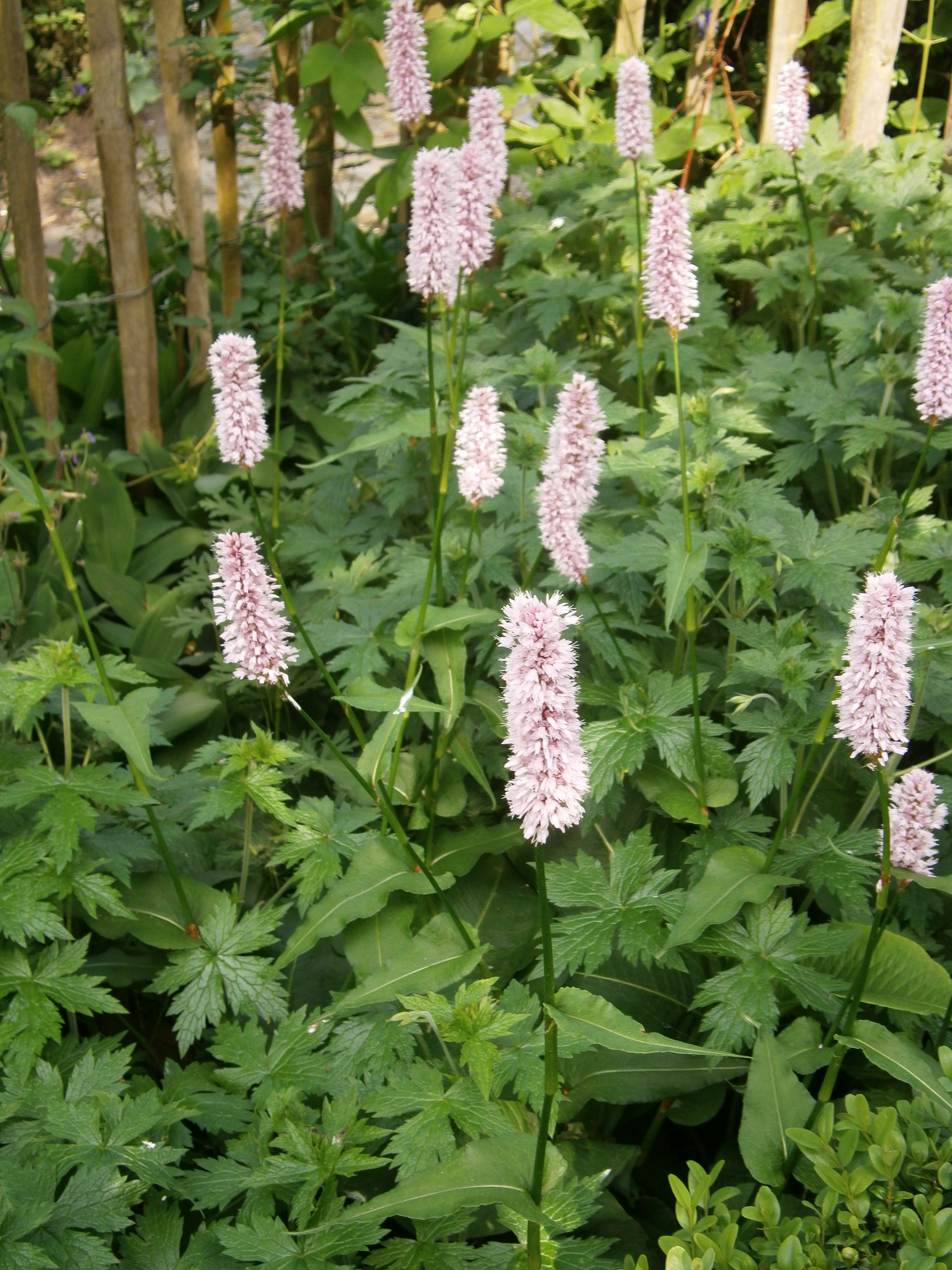Bistorta officinalis
Snakes knotweed ( Bistorta officinalis)
The snakes knotweed ( Bistorta officinalis syn. Persicaria bistorta (L.) Samp, Polygonum bistorta L., Bistorta major SFGray ), also called meadow knotweed, is a plant that belongs to the family of the buckwheat family ( Polygonaceae ).
This type is also called snake root, although this name also Drachenwurz is performed. In the vernacular, this plant is also called " toothbrush " because of the shape of the inflorescence. Because of the similarity to a chive blossom, the plant also bears the name " leek moose ". In Saxony, but also in the resin, the plant is known as the "otter tongue " and was used in wartime as a spinach substitute or in soups.
Description
The Serpent knotweed is a perennial herbaceous plant that reaches the plant height of 20 to 100 cm, with erect, unbranched stems. The strong rhizome is S-shaped coiled like a snake, it is also the German common name is derived. The leaf blade of basal leaves oval to oblong and up to 15 cm long. The upper side of the leaves is dark green, the underside bluish green.
The pink flowers are 4-5 mm long and are in tight cylindrical pseudo-spikes that are about 2-7 cm long. The flower has eight stamens and three pen. The nut fruits are triangular.
The Schlangenknöterich flowers from May to July. Fruit ripening is from August to September.
Occurrence
This species is nearly circumpolar distribution. In Europe, this species is largely absent in Scandinavia. In the south it is represented only in the mountains.
Locations are moist humus soils that are rich in nitrogen and mineral compounds. They are found mainly in wet meadows of lowlands to alpine levels.
He belongs to the indicator plants for soil moisture.
Ecology
The Schlangenknöterich is a semi- rosette plant. The flowers are strictly vormännliche " bluebells with sticky pollen ." The flowers smell probably comes from Pollenkitt. There is rich insects visit, especially by bees. Self-pollination is largely excluded
The small, 10 mg weight nutlets are spread along with the perianth as wind and animal shakers. Because of their airy shell also swimming propagation takes place, as well as random dispersal by ungulates. Vegetative reproduction occurs through the rhizome.
The Schlangenknöterich serves the caterpillars of the moth Blue Iridescent fire and the edge ring Fritillary as a food source.
Use
Fresh snakes knotweed is a valuable fodder; however, it is worthless in the hay, because the leaves crumble.
The Serpent knotweed is also used as wild vegetables. The starchy roots, which contain vitamin C, can be cut by September in the winter in fine slices insert in water overnight and eat then processed with leafy vegetables or as a patty. From April to August you can use the leaves as a basis for lettuce, spinach or leaf vegetable dishes. However, since all parts contain a lot of oxalic acid and tannin, only relatively small amounts of it should be consumed. The thickened, snake-like rhizome was formerly considered a remedy and has been used for the purposes of the doctrine of signatures for snake bites. In this context also refers to the name.
More Photos
Inflorescence
In Vessertal - Thuringian Forest
A stock in the Nature Park South Heath
Swell
- Oskar Sebald: Guide to the Nature. Wild plants in Central Europe. ADAC Verlag, Munich 1989, ISBN 3-87003-352-5.
- Matthias Zimmermann: Nature Encyclopedia (snakes knotweed ), access on January 5, 2008.
- Steffen G. Fleischhauer, Jürgen Guthmann, Roland Berger mirror: Edible wild plants. Determine and use 200 species. AT Verlag, Baden / Munich 2007, ISBN 978-3-03800-335-9.
- Ruprecht Duell, Herfried Kutzelnigg: Pocket Dictionary of Plants in Germany and neighboring countries. The most common central European species in the portrait. 7, revised and expanded edition. Quelle & Meyer, Wiebelsheim 2011, ISBN 978-3-494-01424-1.









